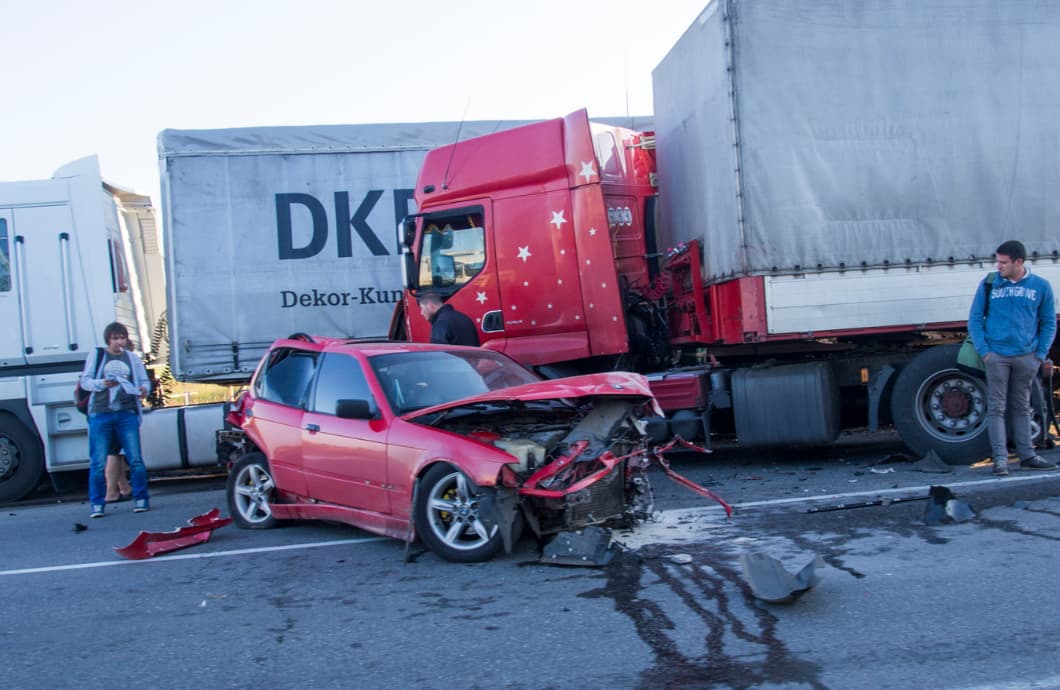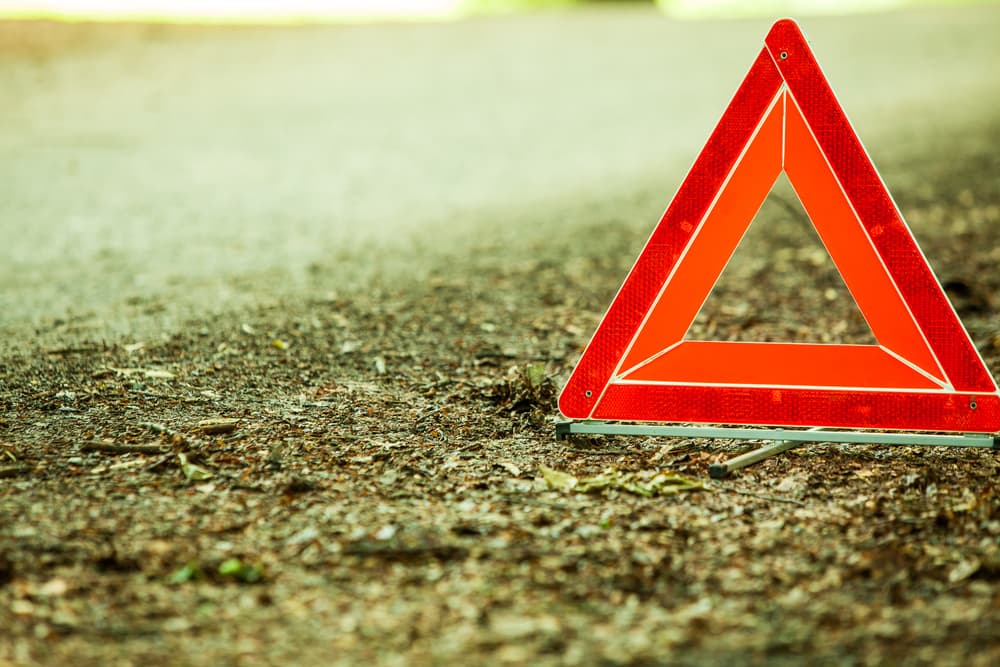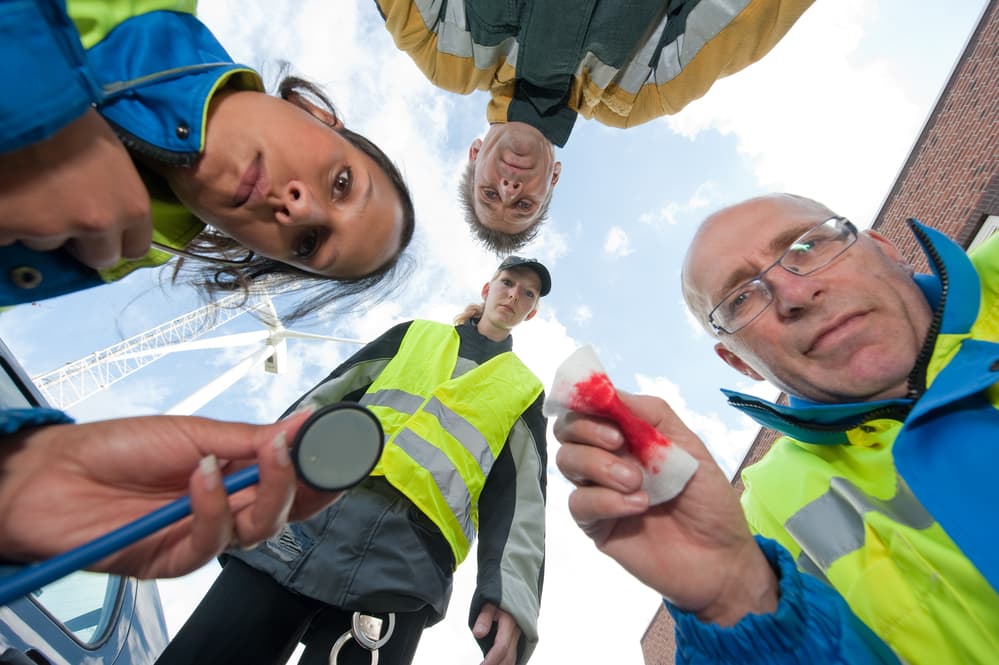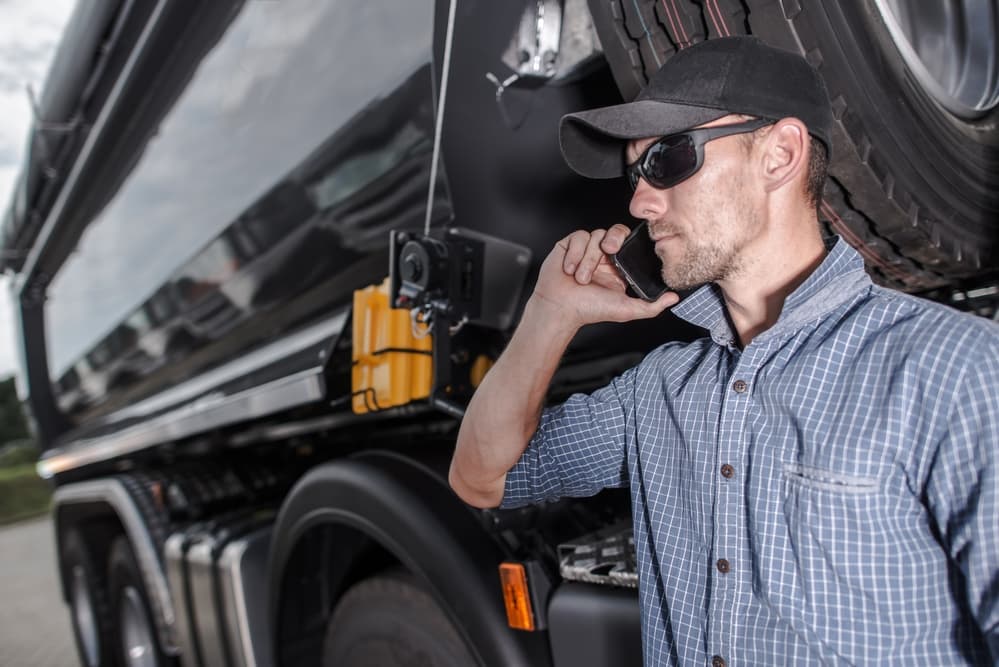
Prefer to listen to this guide?
Disclaimer: This guide is not intended to replace any official protocols or legal advice about how to respond to an accident involving a commercial vehicle. Consult your state’s laws and company’s official accident response protocols for details.
Responding vs. Reacting
Life on the road for a truck driver is stressful as it is. An accident involving a commercial truck can feel like throwing gasoline on a fire (not literally, we hope). However, being prepared to respond professionally to an accident rather than reacting erratically can lessen the trauma for all involved.
Preparing Now for Accidents Later
In this piece, we’re going to walk through the recommended steps you should take as a commercial truck driver in response to an accident involving your vehicle or equipment. These steps will be listed in their suggested order of performance. With this being said, every situation is different and adjustments should be made to ensure that everyone remains safe.
When an Accident Occurs
Whether another vehicle is at fault, you are at fault, or simply a piece of equipment malfunctioned that is no one’s fault, the scene of the accident is no time for finger-pointing or aggression. It is essential to act safely and quickly. Follow these steps in the most appropriate order to minimize injury and damage.
Step 1: Stop Promptly
Once an accident has occurred, stopping promptly is not only a good idea but also often the law. Stop your semi-truck to gauge if everyone is safe as well as to limit damage. Only once you have made sure that no one is put in danger by you moving your truck and that you have communicated to the other party that you’re simply moving your truck and not fleeing the scene, you may move your truck to a safer nearby location. If another vehicle is involved, recommend that they also move their vehicle to a safe location if possible.
Step 2: Place Your Warning Devices

The open road is dangerous as it is, but an accident is even more dangerous. To alert oncoming vehicles to your presence or accident debris, it is important to don highly visual clothing—such as a reflective vest—and quickly place warning devices.
Reflective Bidirectional Triangles
Your truck should have at least three bidirectional triangles onboard to place out in the event of an accident. To safely place them out, keep them visible as you walk against the flow of traffic that is leading to your truck or the scene of the accident.
Fuses & Flares
Your commercial truck’s roadside hazard and safety kit may also include highly visible fuses or road flares. If deemed necessary—especially in low-light conditions—these can also be placed to caution oncoming traffic.
Step 3: Check Everyone For Injuries

Checking everyone for injuries at the scene of an accident means starting with yourself—your own physical or mental state. Due to a rush of adrenaline or disorientation, you may be injured and not realize it. Take a moment to gauge your physical and mental state before moving on to see if others are injured.
Other Injured Individuals
If anyone was injured in the accident, you may provide them with reasonable assistance. If they are in need of CPR and you are certified to do so, you may administer it. Otherwise, reasonable assistance entails keeping them comfortable and alerting necessary emergency services. Never attempt medical intervention beyond your abilities. Also, do not move them unless they are in immediate danger and you have no other choice.
Step 4: Alert Law Enforcement

Like several other steps in this guide, contacting law enforcement following the scene of an accident is often required—legally as well frequently in accordance with your company or insurance provider's policies. If you’re not able to call law enforcement, ask someone else to call or radio for assistance.
Be prepared to provide the following information:
- Your exact location, using mile markers or landmarks
- The number of injured people and the extent of their injuries
- The level of damage to vehicles, equipment, or property
- Your contact information
Exchange Information
Once all parties have been confirmed safe, you will need to exchange information with anyone involved in the accident in the presence of a law enforcement officer. This information should include:
- Full names of all drivers and passengers
- Contact information for all drivers and passengers—including phone numbers and full addresses
- Name of all drivers' insurance companies as well as their policy numbers
- For commercial drivers, the name and contact information of their employers
- Type, make, model, year, and color of all vehicles
- License plate number and expiration dates
To back up the information, to speed up the process, or if writing utensils are in limited supply, ask if you can photograph their license information.
Don’t Leave Until Law Enforcement Says So
Leaving the scene of an accident before you’re supposed to can result in losing your job, your license, or may even land you in trouble with the law. For this reason, do not leave the scene of an accident just because you assume that your presence is no longer necessary. Receive confirmation that you’re free to go from a uniformed officer. It’s not a bad idea to take down the name and badge number of the officer who gives you this permission in case it comes up later. They will likely have identification cards you can ask for. But you still have a few more items to do before leaving.
Step 5. Documenting the Accident
It is a good idea to document everything that occurred during the accident before leaving—while it is still fresh in your memory and while you’re still at the scene of the accident for frame of reference. Your employer will likely have accident report documentation in your truck for you to fill out. These documents are helpful in collecting certain details you didn’t think to include—either because they didn’t seem as relevant or due to your disoriented state.
It may also be a decent idea to video and audio record yourself using your mobile device describing the accident to your immediate recollection to help fill in fuzzy details later. For legal reasons, if you choose to do this, do not share this audio or video footage with anyone unless instructed to do so by your employer for investigation purposes.
For documentation purposes, include the following details:
- Date, time (of the accident as well as current time), and specific location
- All people involved in the accident—including full names, license plate numbers, and driver license numbers
- Fatalities and injuries as a result of the accident
- A detailed retelling of the accident, including road conditions, weather, and any released hazardous materials
Step 6. Notify Your Employer, Company, or Customers
Once you have ensured that everyone is safe, all necessary assistance has been requested, that you've documented the accident while the details are fresh, and that you’re not immediately needed for other purposes, notify your company, employer, or customers of the accident. Not only will an employer need to know about the accident so they can begin processing insurance claims information, but they will also need to alert customers about any shipping delays related to this accident. If you are an owner-operator truck driver, notify your own customers of any projected delays as well as your own insurance providers.
Also, while telling your company or employer about the accident, ask them precisely what you should do next. They may have certain logistical instructions for you or they may advise you from a legal perspective on how to proceed.
Step 7. Check-in With Yourself & Your Equipment Before Proceeding
Once you have received official permission to leave the scene, that doesn’t mean you’re ok to proceed. You still need to:
- Check your truck and equipment to make sure it is working properly
- Make sure that you’ve fully documented all details
- Check-in with yourself to make sure you’re mentally and physically fit to drive
Items to Consider
Alcohol & Drug Tests
You will likely be expected to undergo tests for drug and alcohol intoxication. Do not be offended if you are asked to perform these tests or assume that anyone is accusing you of being under the influence of any substances that resulted in the accident. Drug and alcohol tests for commercial truck drivers following an accident are fairly standard and simply used to rule out any factors that may have resulted in the accident.
Do not drink any alcohol until told otherwise.
After you have been cleared to leave the scene of an accident, you may be tempted to find a nearby watering hole to calm your nerves with a couple of brewskis. While this seems harmless, do not drink any alcohol until you have been notified by law enforcement and your employer that you will not be tested for the presence of alcohol in your system. Tests for alcohol are typically conducted within the first 8 hours following an accident. Drug tests, on the other hand, can take place up to a full 32 hours after an accident. Be ready to perform these tests so that investigators can rule out any intoxication on your part.
In Conclusion
Just because you and your commercial semi-truck were involved in an accident does not mean your career as a truck driver is over or that you will be in trouble with the law. Your best bet at putting the accident in the rear-view and continuing as a truck driver for many years to come is by cooperating with those overseeing the investigation of the accident and your company's legal council, if necessary.
Remain up to Date with My Little Salesman
For more trucking advice like this piece as well as related industry news, feel free to subscribe to our News Roundup. Receive pieces like this right in your inbox and stay caught up—from any device.
Keep reading and subscribe to My Little Salesman today.